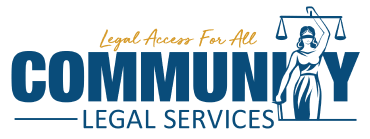The Florida Department of Children and Families (DCF) is responsible for the Supplemental Nutrition Assistance Program (SNAP), formerly known as food stamps, in Florida. There are several benefits DCF may offer when Floridians face disaster. Keep reading for more information.
For information about deadlines related to recent local disasters, visit our Disaster Deadlines page. Check the DCF website for the latest information.
What Are Your Rights?
If there is a known disaster headed to Florida, like a hurricane, DCF can release SNAP benefits to recipients early to ensure they have the resources needed to prepare for the disaster. This is often done automatically without an application or the recipient taking any action.
Disaster SNAP (D-SNAP) is for individuals and households that either live or work in an identified disaster area, have been affected by the disaster, and meet certain income eligibility criteria. Eligible households will receive one month of benefits – equal to the maximum monthly amount for a SNAP household of their size. This assistance is for those who do not qualify for SNAP benefits under normal circumstances and usually is announced a couple of weeks after a disaster.
Another way DCF helps lessen the burden for survivors of disaster is by allowing the purchase of hot/pre-made food with SNAP benefits. Under normal circumstances, recipients cannot purchase this type of food, but because access to electricity, drinking water, and a place to cook can be impacted after disaster, the hot food waiver allows recipients to access food they are able to eat without impacting their budgeting.
What Do You Need to Do?
- Apply for assistance.
- Learn more about other assistance programs.
- Learn the status of your FEMA application.
- Understand any letters you get from FEMA.
- Find housing and rental assistance information.
- Get answers to questions or resolve problems.
- Get referrals to agencies that may offer other assistance.
- Learn about Small Business Administration (SBA) programs.
Disaster food assistance is not always available. If it becomes available, there will usually be a press release issued in local news media outlets.
You may also check the Department of Agriculture’s website or the Department of Children and Families website shortly after a declared disaster for updates.
Assistance programs are available for a limited time and often limit the number of people who can apply or the maximum amount benefits that can be given out. For this reason it is important to apply for any benefits you might be eligible for as soon as possible.
For information about deadlines related to any recent local disaster, visit our Disaster Deadlines page.
Those programs that require an application usually have a limited time to apply – as little as 7 days.
For information about deadlines related to recent local disasters, visit our Disaster Deadlines page.
You may also check the Department of Agriculture’s website or the Department of Children and Families website shortly after a declared disaster for updates.
If your EBT card was lost or damaged during a disaster, call (888) 356-3281 for assistance with a replacement.
FEMA Disaster Recovery Centers (DRCs) are locations you can visit to learn more about FEMA and other assistance programs after a disaster. Use the DRC Locator to find the DRCs near you after a disaster.
A DRC may be able to help you:
